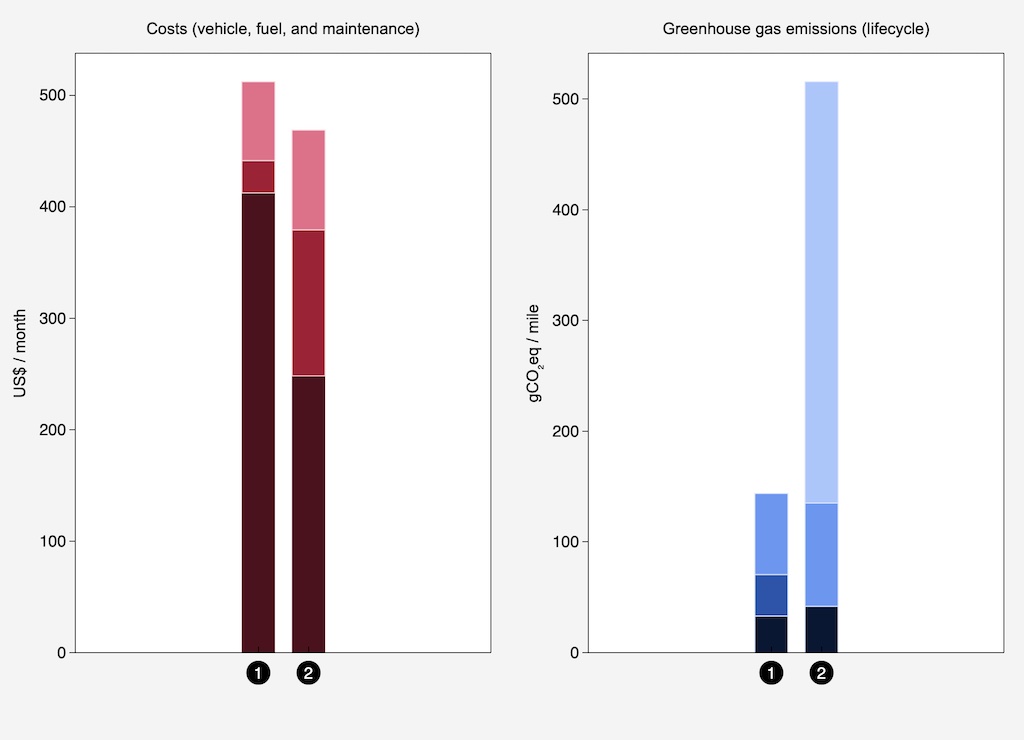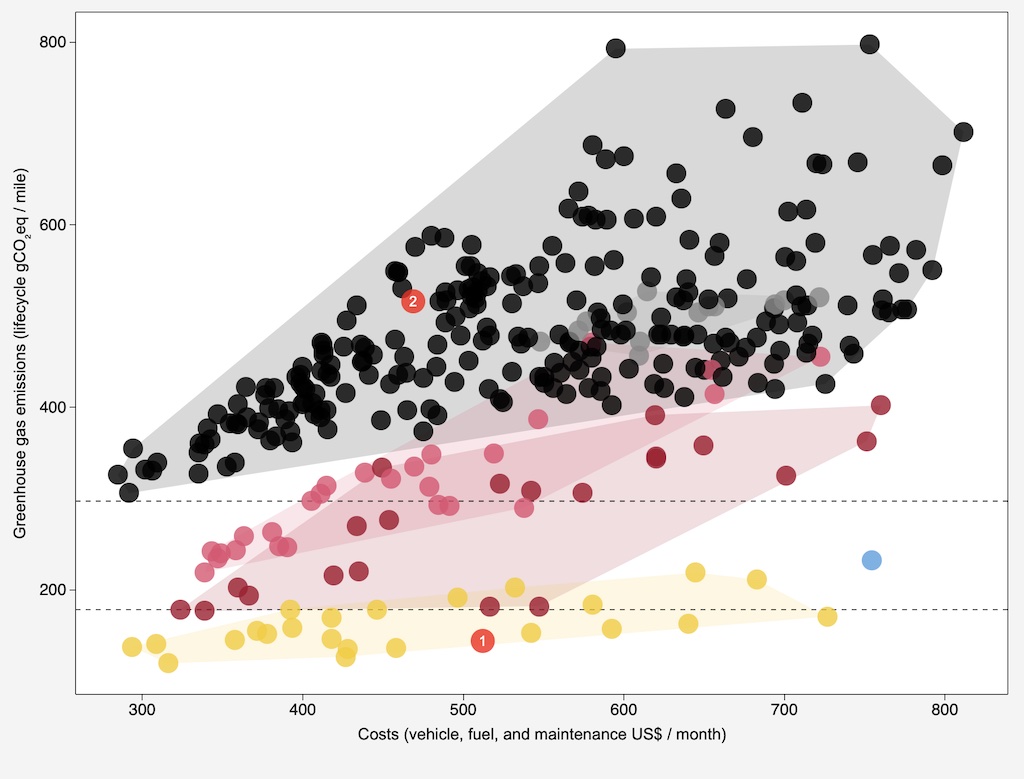Every day more and more people begin to discover that the future of mobility will be electric. No matter social class, profession, gender, or residence, the buzz of change is spreading among the population, including those who live outside the automotive world.
The feeling in society indicates that the transformation is imminent and that all cars will be electric, yes or yes. Despite this, there is still almost a decade left until manufacturers’ supply goes from burning polluting fossil fuels to using zero-emission electrons.
To help understand and verify the real opportunities regarding the environment and the owners’ pockets, the Massachusetts Institute of Technology (MIT), the Trancik laboratory has published some data on the cars’ carbon dioxide emissions and their total costs over their useful life.
Researchers at MIT have determined that electric cars currently sold on the market are cheaper over time than their thermal counterparts.
Although the emissions game is won by electric cars by a landslide, regardless of the source from which the electrical energy used to recharge the batteries comes.
Even using strong exclusively from coal, the electric car emits many carbon dioxide molecules compared to an ICE.

During the research, MIT scientists have considered plug-in hybrids, from which they have obtained curious results. In some cases, PHEVs have been found to get a similar cost in economic and emissions terms as an internal combustion car (after all, the heart is the same except for the extra hybrid element).
In other cases, plug-in hybrids have been cheaper and somewhat less polluting.
When it comes to verifying each technology’s economic cost, gasoline vehicles require a more significant investment in maintenance than electric cars.
The fewer moving parts subject to wear and tear, the absolute absence of oil, and other elements that do not exist in BEVs, make the difference when it comes to checkout.
Stopping at the gas station is also decisive when it comes to containing the operating cost of an electric car powered by electricity, generally in its owners’ homes, enjoying low rates compared to the price of a liter of gasoline or diesel.
At MIT, they put the example of one of the most popular cars in the U.S. electric market, the Tesla Model 3. The U.S. saloon can cost $11,000 more than a Nissan Altima. But after the comparison carried out, this extra is offset by the savings throughout its useful life.
The Tesla used in the comparison has ended up costing its owners $426 per month. On the contrary, a Toyota Camry XLE, after accounting for the cost of gasoline and maintenance, reaches $449 per month.
While the figure in the previous example is quite similar between the two models, Toyota’s contribution to climate change is double that of Tesla. All this without counting the differences in quality and driving pleasure that an electrician has compared to an ICE.
According to the researchers, depending on the state where you reside, the results may vary. For example, Florida has much cheaper electricity than other states in the North American country. This further reduces the operating costs of the electric car.
To check the comparative results, MIT has made their calculator public so that each person can directly compare the economic differential throughout each car’s life, reaching the thermal supply with that of the different models of electric vehicles for sale in the U.S.

